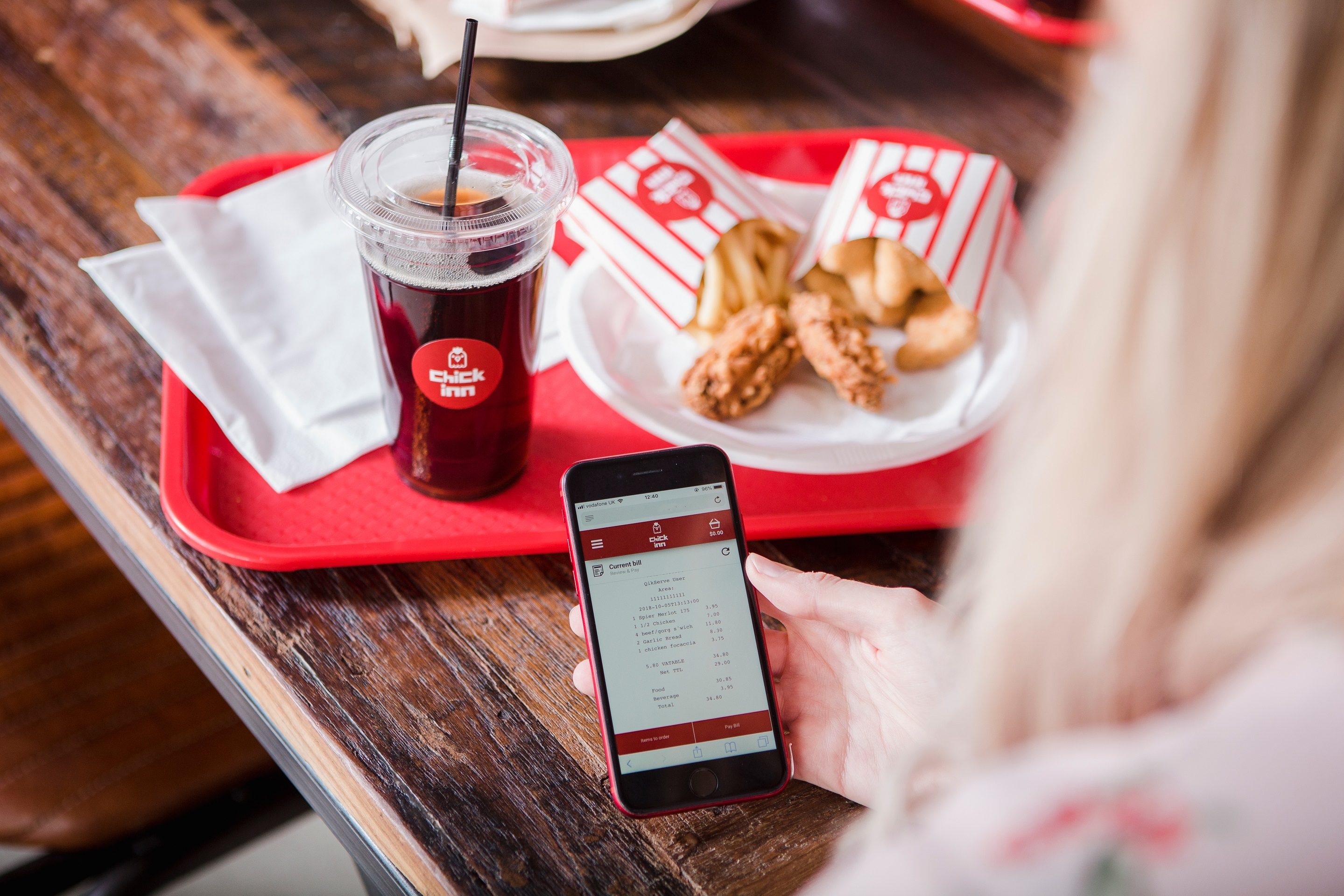The Future of Restaurant Payments Is Tied to Your Phone

Photo Caption: QikServe's technology enables self-serve payment processing at restaurants.
Skift Take
Paying (and, in some cases, ordering ahead) via smartphone can drastically cut down wait times and improve efficiency and overall customer satisfaction in the dining room.
When it comes to eating out, waiting for the bill is one part of the meal that often drags on the dining experience. When customers are ready to pay and leave, the faster that is facilitated, the better.
To solve the issue, several restaurant tech players are testing digital payment solutions to eradicate that waiting period.
QikServe, a U.K.-based company that focuses on self-serve solutions in hospitality, has been piloting a mobile payment program with two casual dining brands in the U.S. that allows diners to pay for their meal — and eventually order at the table — either through the brand's own app or a web page that's loaded by scanning a QR code at the table.
"I think the most important thing is we give the guest a choice, ultimately," Daniel Rodgers, QikServe's founder, explained. "For a lot of restaurant guests, they don’t go often enough to justify downloading an app for an experience that they are not going to do frequently. Being able to engage at different levels is the biggest thing for us. It’s putting the guest in control in a way that doesn’t have too many barriers around it."
QikServe has been piloting the technology at a handful of restaurants in California and Pennsylvania, and while the company declined to disclose the brands included in the partnership as of yet, Qikserve confirmed that the technology would be rolled out system-wide later this year. Combined, the partner brands operate over 3,500 restaurants across the U.S.
Rodgers noted that the test locations experienced more consistent tipping behavior, and the amount of tips were typically higher than average. There was no marked difference in the amount of walkouts at any location.
"What we’re keen to do is not disrupt the normal flow in terms of operations," Rodgers said. The partnerships hinge on point-of-sale integration, so that staff members can easily monitor their tables and see where diners are in the payment process.
The Natural Next Step
Yumpingo, a restaurant tech startup based out of London, quantifies and analyzes consumer feedback about the restaurant experience using a digital device that is handed to diners alongside the bill at the end of the meal. It was a natural extension to add the ability to process payments through the device itself, according to Dan Dillon, Yumpingo's vice president of US operations.
"Nobody says, 'Wow, I have to come back next time because the payment process was fantastic,'" Dillon said. "It’s a means to an end in really enhancing and evolving consumer sentiment."
Yumpingo launched in the U.S. in October 2018 with an expansion of its TGI Fridays partnership, which began in the company's U.K. restaurants. It is currently developing payment processing technology with an unnamed U.S. partner.
Eventually, Dillon believes that it'll be normal to see payment processing in restaurants happen not on a separate digital device, but on diners' own smartphones. "I truly believe that the future of pay at the table will be bouncing users to their own device," Dillon said.
The Right Value Proposition
Allset launched in 2015 as a business-to-business solution for companies like Lyft to let their employees order ahead at nearby restaurants for lunch and pre-pay for their meals before arriving at the restaurant. It has since pivoted to a business-to-consumer solution for restaurants to allow diners to order ahead and pre-pay (and pre-tip) for any meal to cut down on ordering and payment wait times.
Allset is currently available in 11 markets in the U.S., working with 2,000 restaurants and serving about 55,000 diners on a monthly basis.
On January 10, Allset will start testing an integrated pre-order and pay partnership with BJ's Restaurant & Brewhouse, which operates over 200 restaurants across the U.S. The Allset test will roll out in seven BJ's locations in Los Angeles and Austin, Texas.
"BJ's was the easiest to start with because they already built their workflow for that kind of service," Stas Matviyenko, Allset's CEO, said. "They've tested pre-orders in house before. They saw potential in that and wanted to bring that to a bigger level, to scale it."
Before Allset, Matviyenko previously worked on a mobile payments startup called Settle (which was eventually bought by Allset). There, he learned that it was necessary to provide more than just the ability to pay using a smartphone if the majority of diners were truly going to convert to using the technology.
"If you offer just mobile payments, you're competing with cash and cards," Matviyenko said. "It’s much easier to pull out a card than go to the smartphone app. Mobile payments are cool but they need to be supported by other functions. It looks like a bigger value."
Once the perceived value proposition hits the right balance, however, then it's a lot easier to bring diners on board with the technology, especially in the current digital age.
"Just look at how quickly people converted from raising their hand to Uber. Look at how quickly people converted from calling a restaurant for a reservation to using an app," Matviyenko said. "It’s much easier to convert people now than five years ago."
